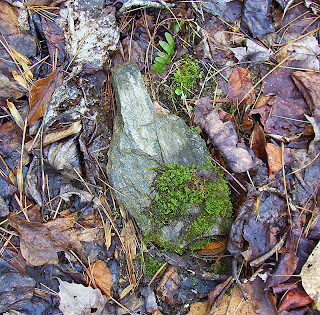



A couple of artifacts found here on the farm. The white quartz point I found a few days after we moved in here. It was in a small pasture by the creek that runs through our barn yard. It was just laying on the grass, kind of like the Manitou stone shown below; as if it had been placed there that very morning. I'd walked by that spot a number of times and hadn't seen it before.
The black our son found in a little hole the dog dug. Right outside the kitchen door! We've found other items that look like they might be artifacts but can't be sure.







































